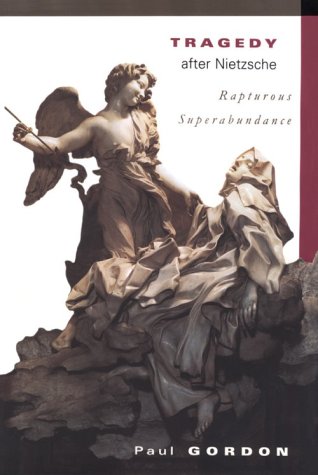In "Tragedy after Nietzsche", Paul Gordon sets out to rescue the notion of tragedy for the modern world: a world that has lived through the Holocaust and the death of God. In settings as far-reaching as Kant, Yeats, Freud, and the American blues, Gordon argues for the continued importance of tragedy as a genre of "rapturous superabundance." In defining rapturous superabundance, Gordon explicates the tension between Apollonian principles of preservation and orderly boundaries, exemplified in Aristotle's theory of tragedy, and an ecstatic Dionysian energy - essentially a manifestation of will - that ruptures boundaries. Aristotle denied this disruptive element by focusing on tragedy as a rational framework for redefining moral boundaries. Nietzsche seized on it as the core of his theory of tragedy. Gordon expands on Nietzsche's definition of tragedy as the rapturous confrontation between the human and those forces that exceed it.
Tapping Freud's theories about repressing forbidden desire, Gordon follows Nietzsche in identifying the Dionysian/Apollonian tension as the creative source of tragedy - indeed, of all great art - and also the source of the audience's pleasure at witnessing tragedy's spectacles of destruction and despair. In this context, tragic rapture becomes the pleasure beyond boundaries, and superabundance is established as a general aesthetic principle. Gordon applies Nietzsche's theory of tragedy to a variety of works that raise the question of tragic rapture in compelling ways. Why do we experience pleasure in identifying with the sadness of a blues singer? Should the Holocaust be considered tragedy? By understanding tragedy as a rapturous confrontation with the abyss of meaninglessness, "Tragedy after Nietzsche" affirms the eternal rebirth of a tragic spirit that unites passion and beauty with destruction.
- ISBN10 0252025741
- ISBN13 9780252025747
- Publish Date 4 December 2000
- Publish Status Out of Print
- Out of Print 6 March 2006
- Publish Country US
- Imprint University of Illinois Press
- Format Hardcover
- Pages 176
- Language English
